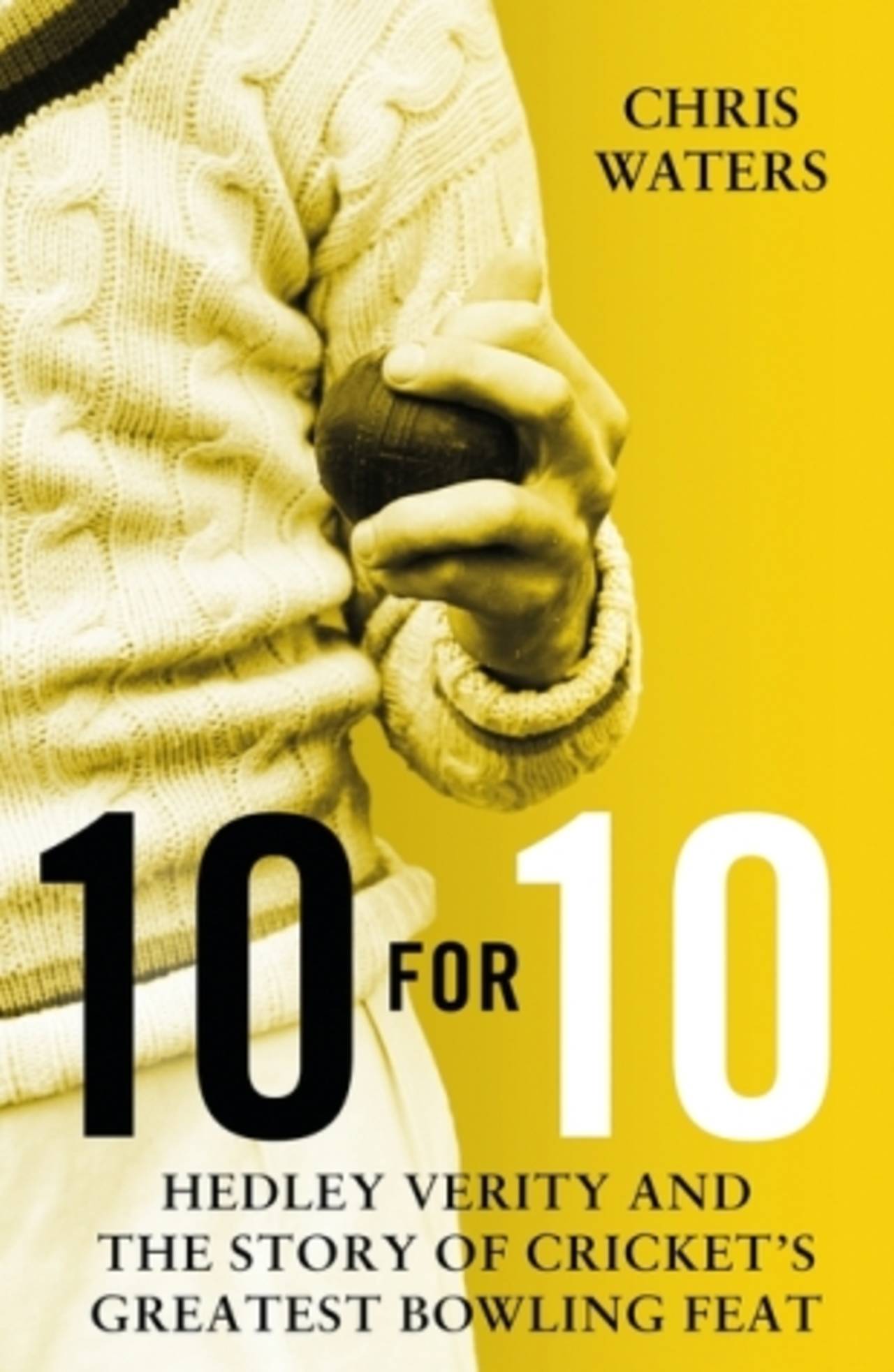The tale of Hedley's ten
A absorbing account of a universally loved cricketer and the impressive bowling feat he achieved eight decades ago
Ivo Tennant
23-Jun-2014

Bloomsbury
No one had an unkind word to say about Hedley Verity. Not Sir Donald Bradman, whom he dismissed more times than any other Test bowler, nor any other batsman, not his Yorkshire team-mates, and most certainly not Douglas Jardine, the England captain with whom he forged a seemingly unlikely but close friendship - to the extent that he named his son after him.
Verity and Jardine: two of the most fascinating figures in English cricket. It is quite possible, of course, that the affection in which this unquestionably great left-arm spin bowler is held has something to do with the fact that he was killed in the Second World War. He was only 38. It is mind-boggling to consider the number of wickets he would have taken had he been granted a full life and a full career. No wonder Geoffrey Boycott (who also bowled wearing a cap) is always banging on about uncovered pitches.
If there had been anyone, dead or still alive, who did have a bad word to say about Verity, rest assured Chris Waters, the author of 10 for 10: Hedley Verity and the Story of Cricket's Greatest Bowling Feat (Bloomsbury £10.99; it should have been priced at £10.10), would have unearthed the detail.
Waters spoke to the last surviving player of the match in question in 1932 between Yorkshire and Nottinghamshire, Frank Shipston, whose eyes misted over at the memory. "Such a fine chap and such a fine bowler." He is now dead, as is another man whom Waters also met who was present that day at Headingley, John Richardson. It was the only time he saw Verity play. Such reminiscences make for an absorbing book.
How good was Verity? Bradman reckoned he could never entirely fathom him, which must be the ultimate compliment. His action was classical; his accuracy and reluctance to give runs away was drilled into him in Yorkshire. Waters writes that he "spun the ball just enough and, allied to his ability to make it lift, a skill intensified in wet conditions and a weapon known as his perching ball". He could well have been describing, three decades later, Verity's heir, Derek Underwood, who would have been worth interviewing for this book.
Jardine, that summer of 1932, reckoned Verity would be the ideal bowler to shore up an end in Australia that winter while the fast bowlers accounted for Bradman and other leading Australian batsmen. Verity, from a very different background to his captain, admired his tactical thinking and planning. This was, of course, an era in which the captain's command was obeyed, and sportsmen, even the greatest ones, would sign up to fight for "the old country" without question, but it was still an intriguing relationship.
As well, inevitably, as there being little footage of Verity the man and the cricketer, there are few quotes from him about his bowling and his life that can be dug up by the biographer. Sportsmen of the day did not provide end-of-play commentaries. Douglas, Verity's son, now also sadly dead - it is just as well Waters began his research some years ago - added telling family detail. "This is the end of my cricket career," Verity told his father, Hedley senior, a coal merchant, as war was imminent in 1939. Nonsense, was the reply. "I tell you, this is the end of cricket for me."
Verity correctly predicted the war would last six years. He was killed after four, in 1943, when with the Green Howards in Sicily. His great friend and Yorkshire and England colleague Bill Bowes heard the news in a prisoner of war camp on the Adriatic coast. "Say, there was some cricketer guy at Caserta," said a Canadian airman who had just been shot down over Naples. "Bowes staggered into the deserted roadway that ran through the camp," writes Waters. "Pain sliced through the pit of his stomach."
Meanwhile, Jardine, who had been lucky to survive in France after becoming detached from his men, was picked up and shown to a destroyer. "We're bound to be all right now, sir," said his batman. "She's named after your favourite bowler."
The ship was called HMS Verity.
10 for 10: Hedley Verity and the Story of Cricket's Greatest Bowling Feat
by Chris Waters
Bloomsbury, 2014
£10.99

by Chris Waters
Bloomsbury, 2014
£10.99
